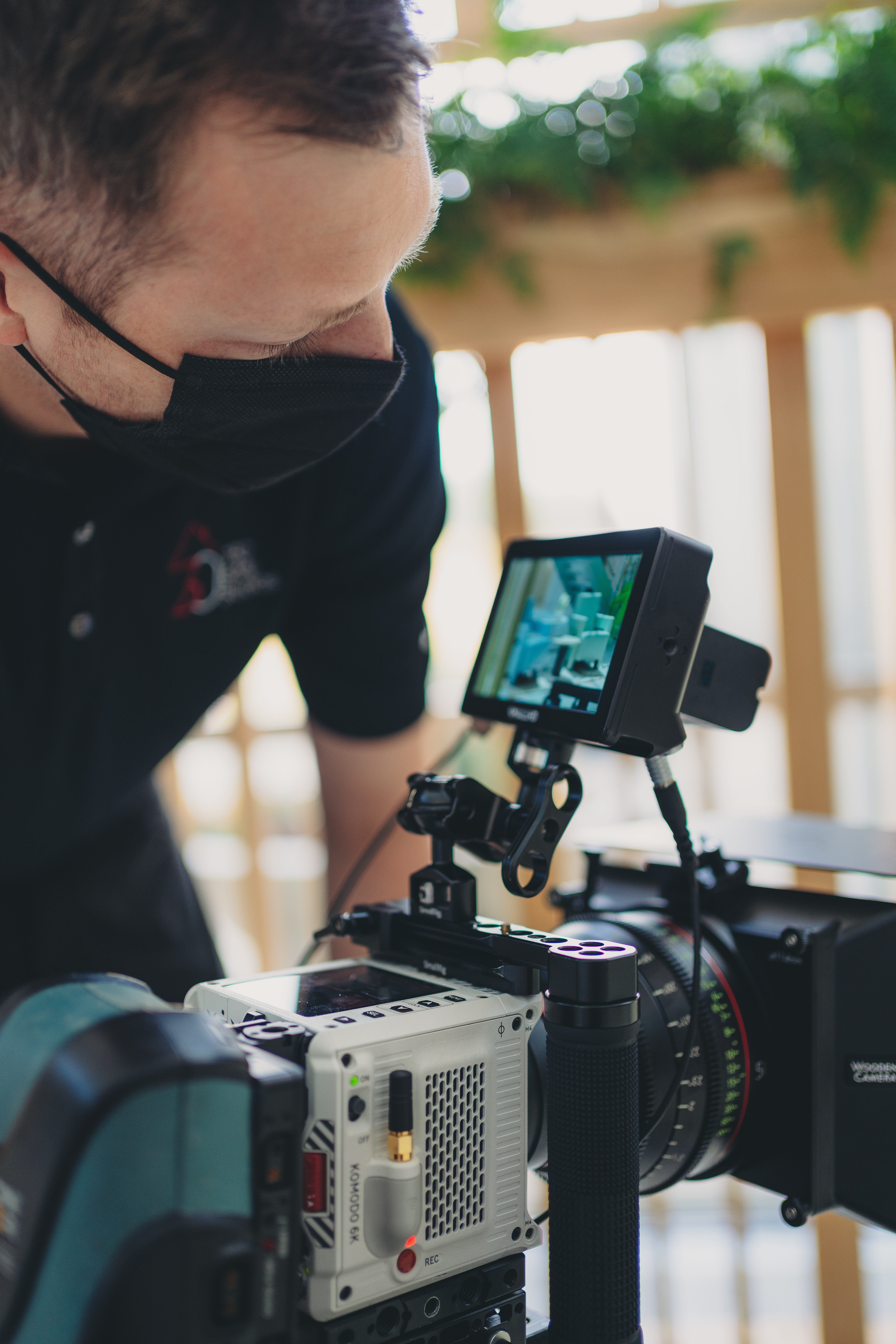
If you're new to the world of video production, this blog post is for you.
Stepping into an industry like this - a high-stress work environment where time is of the essence and everything can go wrong - can be pretty intimidating.
No one knows this better than our team at 730 Eddy Studios.
That's why we came up with this list. From the vital procedures we never neglect, to the detrimental pitfalls we avoid along the way, following these practices has been essential to delivering full service video experiences to our clients.
These are our Top 10 Best Practices for Video.
10. Trust your Crew
This practice is foundational to the beginning of any great project, which is why we're starting off with it.
The best thing about this industry is that everything is a team effort. What you could never accomplish on your own, you can accomplish ten times over with the help of your team.
"You don’t have to have all the answers," Production Director Dane Covey says. "Rely on your team to help you get where you need to go."
9. Always Ask Questions

"One of the best practices I think is to not be afraid to ask questions," says Liberty Romanik from Production. "It saves a lot of time when you are on set and makes the process run much smoother."
Specifically, clarifying roles and responsibilities on set is invaluable to performing your duties to the best of your ability.
"It's always good to have a rough plan in your head of everything your role entails when you get to set," Liberty continues. "When everyone knows their own responsibilities, you are bound to have a great shoot!"
8. Stay Organized
Keeping every aspect of production organized from beginning to end is absolutely necessary.
"Every part of pre-documentation all the way to delivery should be organized in a way where someone outside of the project knows where to find certain assets," says Cinematographer and Editor Austin Stuk.
This is most vital in the post-production stage. Especially when you're working with multiple editors, it is crucial that every piece of footage and audio is labeled appropriately.
"You may know where everything is, but someone else might not be able to help if they don't," Austin continues.
7. Go the extra mile.
Really, trust us. Working harder to make your project as great as possible is always worth it in the end.
"If you see some small detail in your shot that you want to fix, fix it," says Liberty. "Even if you’ve been setting up for two hours and this is gonna take an extra 15 minutes, it will always yield a better result and your client will be extra happy."
This industry demands a lot of us, including the challenge of always improving. Your clients will always value the extra time you took to further enhance their video.
"Always ask yourself, 'What else can be done to improve the project?'" Creative Director Kevin Sytsma says.

6. Give yourself Enough Setup Time
We can't stress this enough. Setup time will always take longer than you expect, so anticipate that in preproduction.
If you give yourself more time than you think you need, the production will be a significantly less stressful process.
"There's a big difference between 30 minutes of setup and 60 minutes of setup," says Ethan Engeseth from Production. "The longer you have to dial-in a shot, the less problems you'll face in the long run."
5. Lighting: Less is More
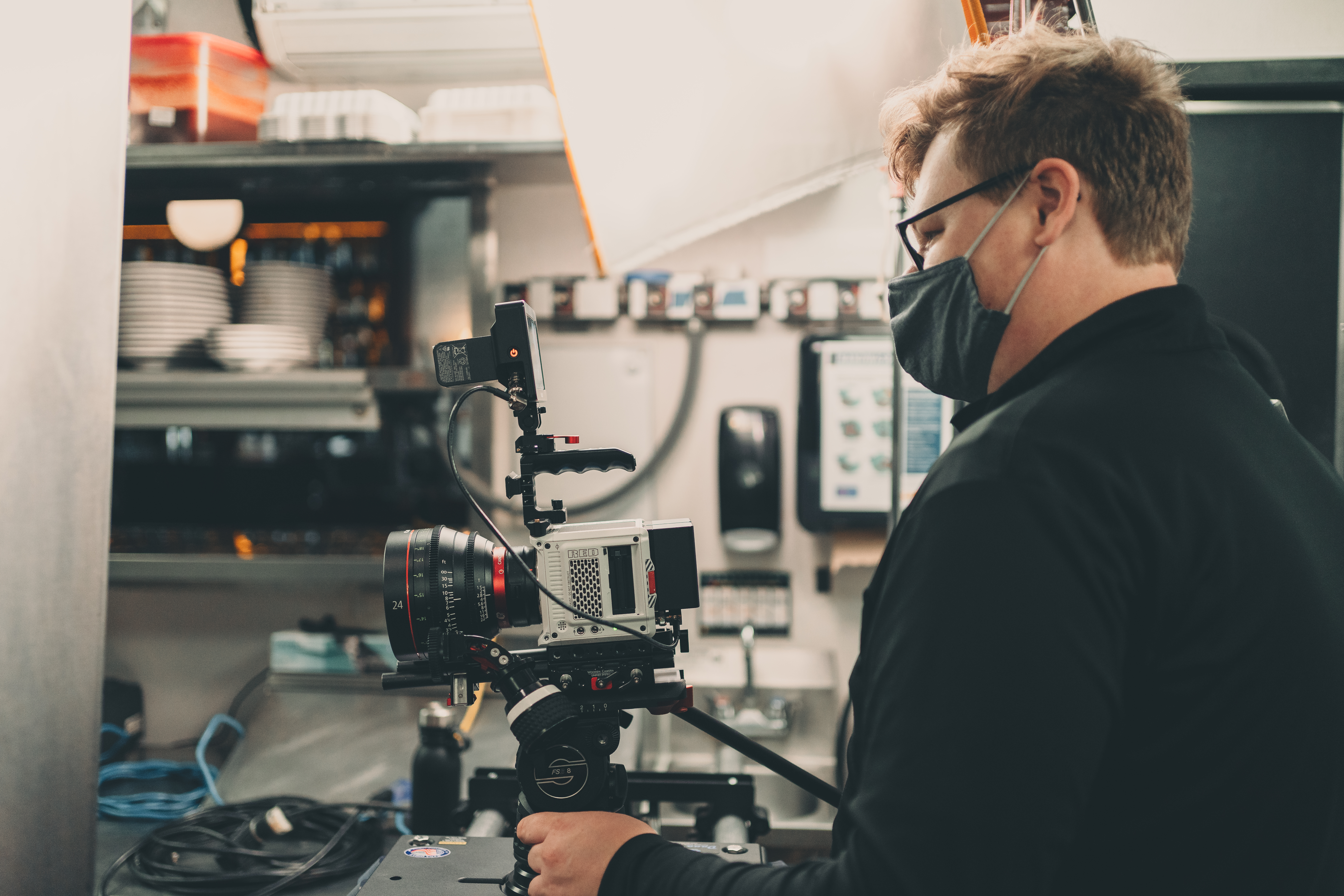
Lighting is one of the most important aspects of video production, but that doesn't mean it shouldn't be used sparingly. Subtraction is a powerful and underrated technique when it comes to lighting your scene.
"Less is more when it comes to lighting," Dane says. "If you’re lighting a scene or an interview and it just isn’t looking right, sometimes taking a light away or adding some negative fill is the solution."
Bonus: It's important to know what your frame is going to be before you start thinking about lighting.
"Set up your shot first, then light around that," says Videographer Donny.
4. Keep Your Clients/Talent Happy
Keeping the subjects of your production happy is vital to the smoothness of the production.
When you make as many promotional videos as we do, you interview a lot of people. Most everyday people aren't used to being filmed in front of a camera; it can be pretty intimidating.
That's why it's important to make them feel as relaxed as possible. "It's always nice to get to know them a little bit before you start the interview," Liberty says. "Asking how their day is going or what they plan to do this weekend is a great way to get them relaxed in front of the camera."
Making sure your clients have everything they need is also extremely important, on- or off-camera. "[Your clients] are more than likely not used to long periods of work without a break, snacks, or intensive shooting schedules," says Ethan. "Communicate with them and ask if they need anything and make sure they're getting what they want."
Bonus: Communication is vital, even if your clients aren't the one who will appear on camera.
"Never assume the client knows exactly what they want," Ethan continues. "Bounce ideas off of them and establish good communication on- and off-set to ensure the end product is the best it can be."
3. Always Scout your Locations
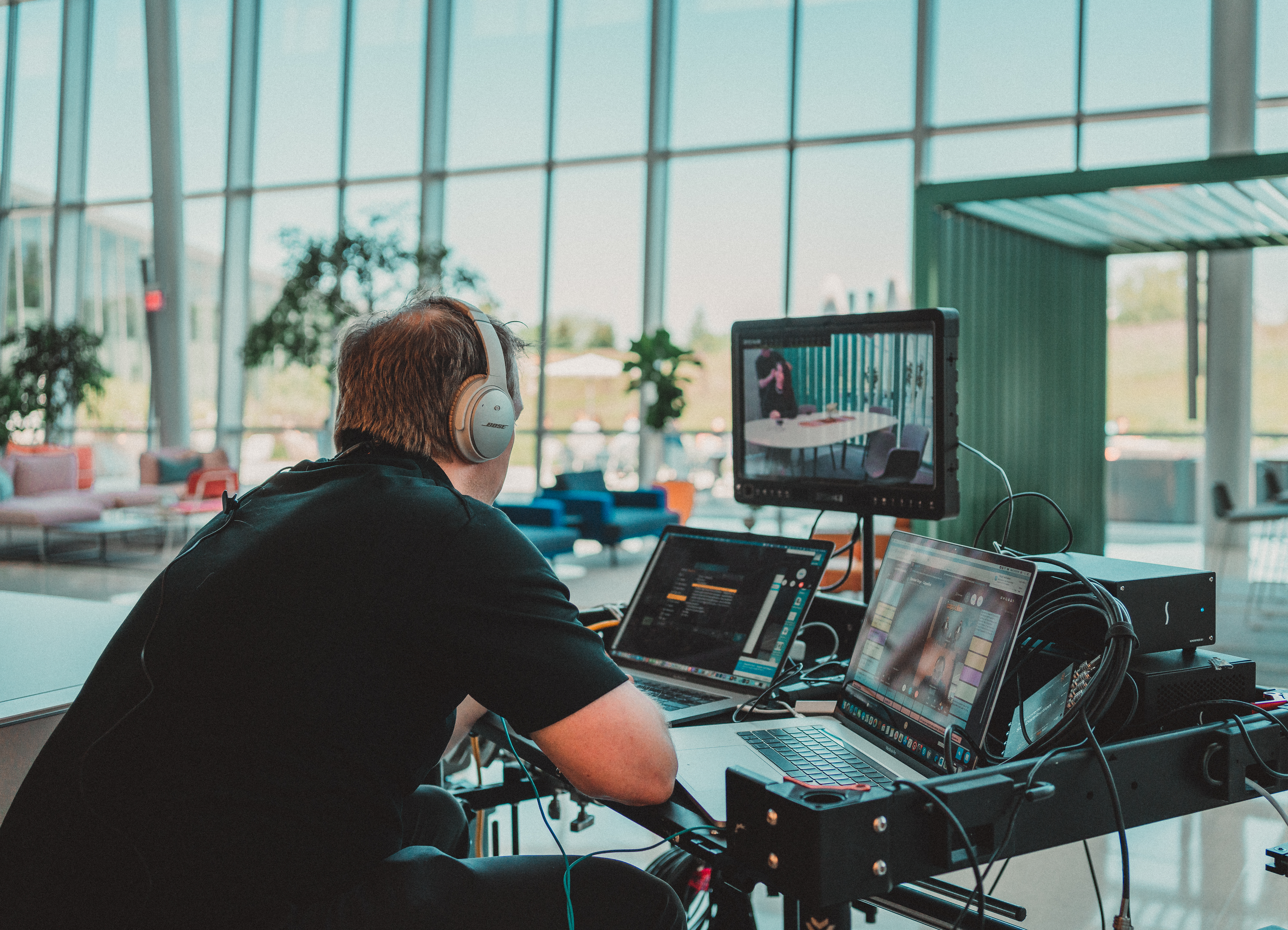
Location scouting is an imperative step in the preproduction process, yet it's often the most forgotten.
"Tech scouts save time," Dane says. "If you can visit and take photos of where you’ll being shooting, a lot of day-of logistics can be avoided."
Scouting a location at the same time of day as when you plan to shoot is also important to consider.
"The more you know about the location - if there's an AC unit or refrigerator that makes noise, if there's natural light anywhere, if you have access to enough electrical outlets, etc. - the smoother the production," says Ethan.
2. Don't Neglect Audio
The importance of audio can't be overstated.
"Don’t neglect the other 50% of your of video – audio," says Senior Editor Nick. "If you don’t prioritize quality audio recording on set, it can be difficult to clean up in post production. Good audio goes unnoticed, but bad audio can be unforgivable."
"Make sure to monitor your audio," says Donny. "It's so much easier to have someone say something again than to have try and cut around someone's background cough."
"Visuals are only half of the final outcome," says Austin, "so spend time making the sound as good as you can!"
Nick recommends listening "for continuous sounds before pushing record, such as an AC unit hum, and try to shut it off beforehand."
While we don't always have control of the environments we shoot in, being mindful of these things is vital to coming out with a high-quality video.
1. Never Plan to "Fix it in Post"
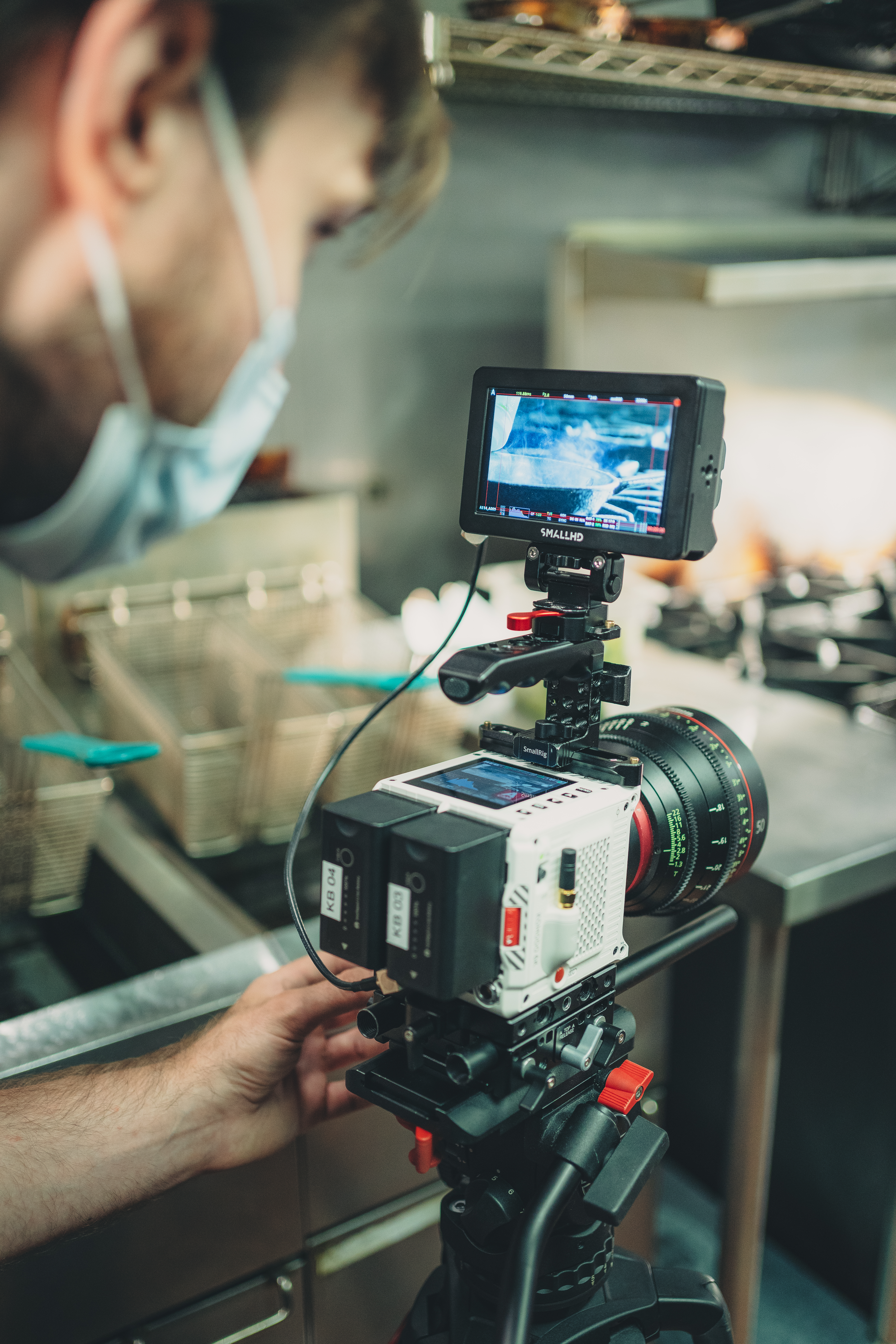
We've all been there. You're on set, trying to solve a seemingly unsolvable problem, and time is not on your side. Finally, the director utters the famous words: "We can fix it in post."
By far, this is the piece of advice everyone agrees on the most.
"Take the time to go ahead and get the shots as good as you can in camera," said Donny.
This mentality is often a result of a lack of preparation in the preproduction stage. "Plan your shots ahead of time," says Ethan, "and make sure it's feasible with your budget."
"I understand there are always time constraints on set, and you don't always have the option for another take," says Nick, "but it's important to consider the extremity of every issue you come across. If it's the director's coffee cup in the background of a stationary shot, that may not be a huge problem. It's another story entirely if a subject is poorly lit. That shot will never look quite right, no matter the amount of time you put into it."
Even the best editors in the world will tell you the same thing. Not all problems can fixed in post, so taking the time to avoid them is always worth it.
At the End of the Day...
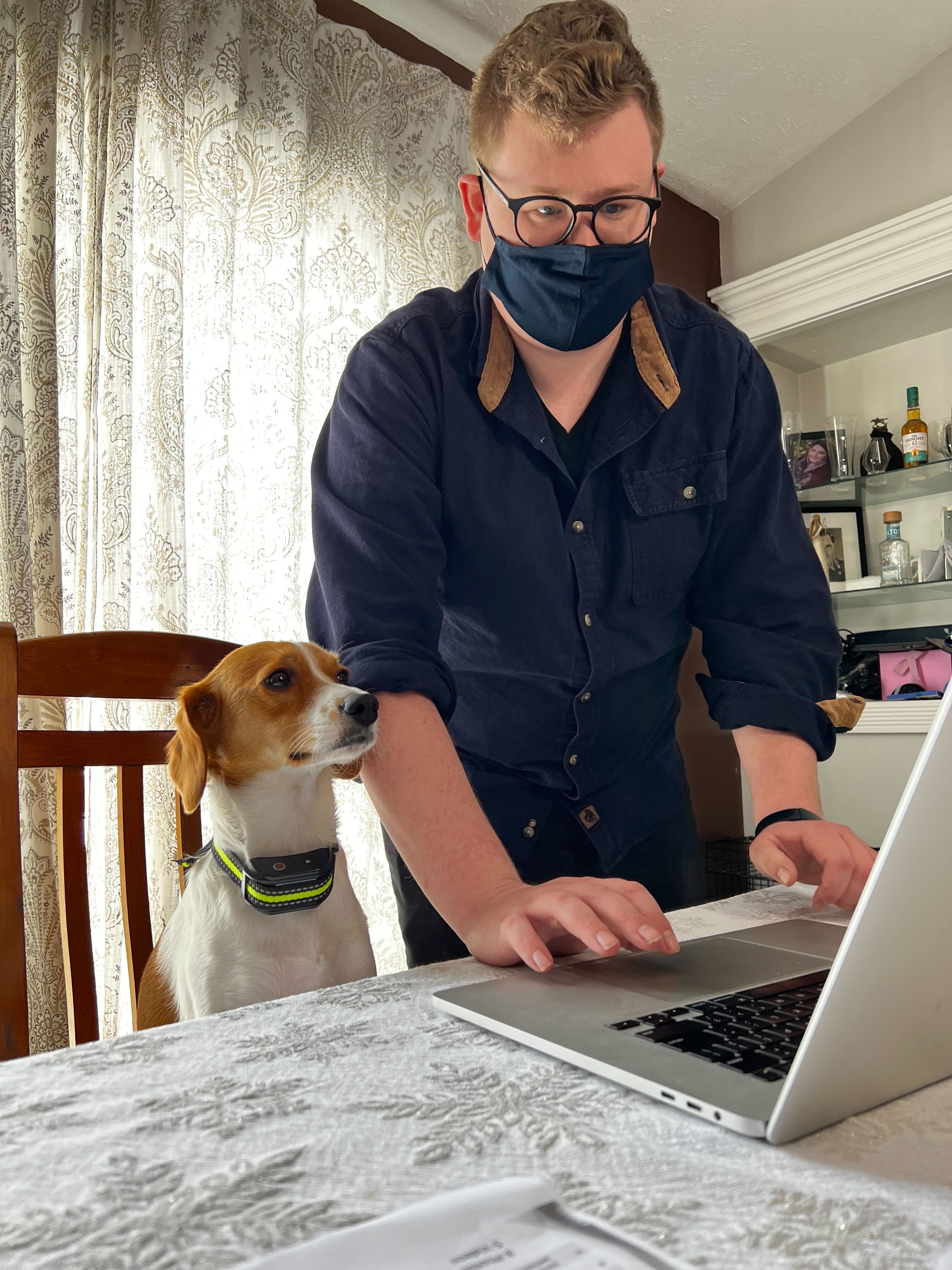
These practices are all things our team has learned from making mistake after mistake over the course of our careers.
While making your own mistakes is the best way to learn for yourself, we hope this list gives you some insight as to how the members of a professional video company operate.
"At the end of the day, it’s just video," Dane says. "Have fun and work hard."
